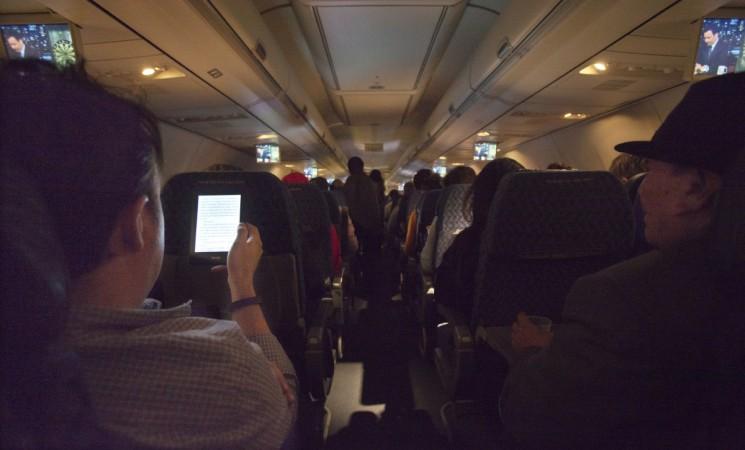
Are you tired of bidding farewells before boarding an airplane and being completely disconnected from the world? Not for long, says Civil Aviation Secretary Rajeev Choubey. The Indian government is working to offer Indian fliers with the facility of using their mobile phones and internet services in a mid-air flight over Indian airspace.
The facility will be available for both domestic and international flights in Indian airspace, as per the officials, PTI reported. According to Choubey, there will be "some good news in the next 10 days on this front."
Currently, usage of calls and internet services on a mobile device is prohibited and fliers are advised to place their phones in flight mode before takeoff due to "security reasons." But the Ministries of Home Affairs, Telecom and Aviation are working together in pursuit of a solution to allow use of onboard Wi-Fi.
One of the biggest challenges of Wi-Fi services in airplanes is the cost, which is too expensive. According to Choubey, the pricing of in-flight Wi-Fi service in India will be at the discretion of the airlines and there will be no caps on that.
Airplane Wi-Fi is not entirely new as some international airlines are already offering in-flight Wi-Fi services, which serves as a great add-on for airlines in the competitive aviation industry. But when these flights enter the Indian airspace, use of Wi-Fi has been restricted. Gogo is currently the top provider of in-flight Wi-Fi and has partnered with Delta Airlines, United Airlines, American Airlines and Virgin America. Fliers can purchase the service before boarding the flight, but the pricing is on the expensive side.
How does Wi-Fi work in airplanes?
First of all, the airplanes must be equipped with Wi-Fi antennas, which are placed on the belly and on top of the airplane. When in air, the airplane Wi-Fi antennas connect to the towers on the ground to provide Wi-Fi on board. In case the airplane flies over water bodies where there are no towers installed, the antennas placed at the top start communicating with the satellites to gain internet access.
But there are several challenges linked to in-flight Wi-Fi. Firstly, it is the speed. Since an airplane is constantly moving at high speeds of about 550 miles per hour, it is difficult to maintain a consistent internet speed. The in-flight antennas must constantly be scanning for new towers on the ground or the satellites orbiting the earth at about 18,000 miles per hour.
Airplane Wi-Fi can be used primarily for checking mails and regular browsing, but streaming videos will eat up a lot of bandwidth.
Another major concern with in-flight Wi-Fi is that the airplane must undergo special redesigning to fit the Wi-Fi antennas. This increases air drag in the flight and requires more fuel, which means higher cost for the passenger.
Since India is soon to welcome this breakthrough technology in flights, the costs associated with this service will raise concerns. It is up to the airlines to decide the cost of offering Wi-Fi in flights, which is likely to be optional.

















